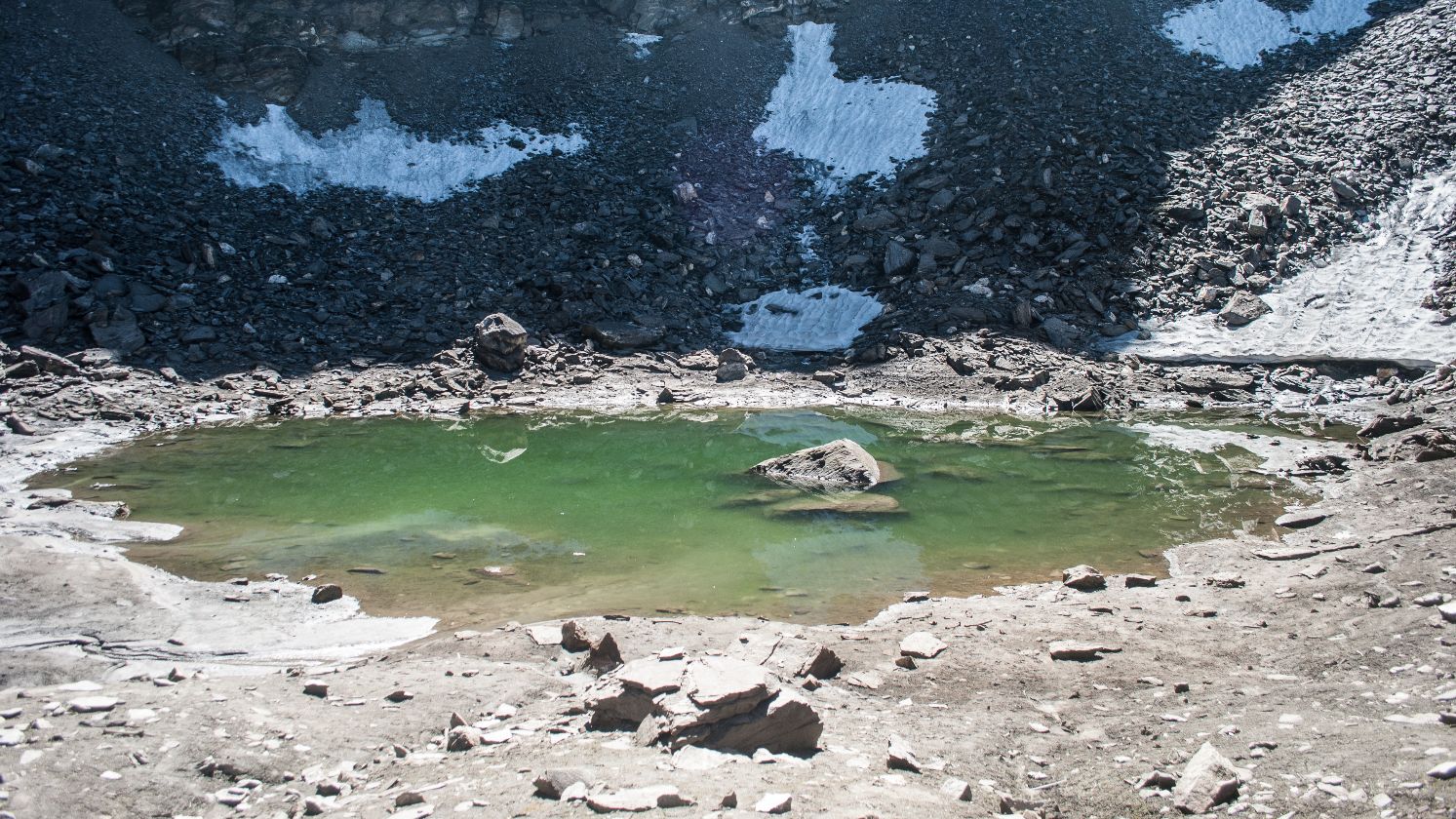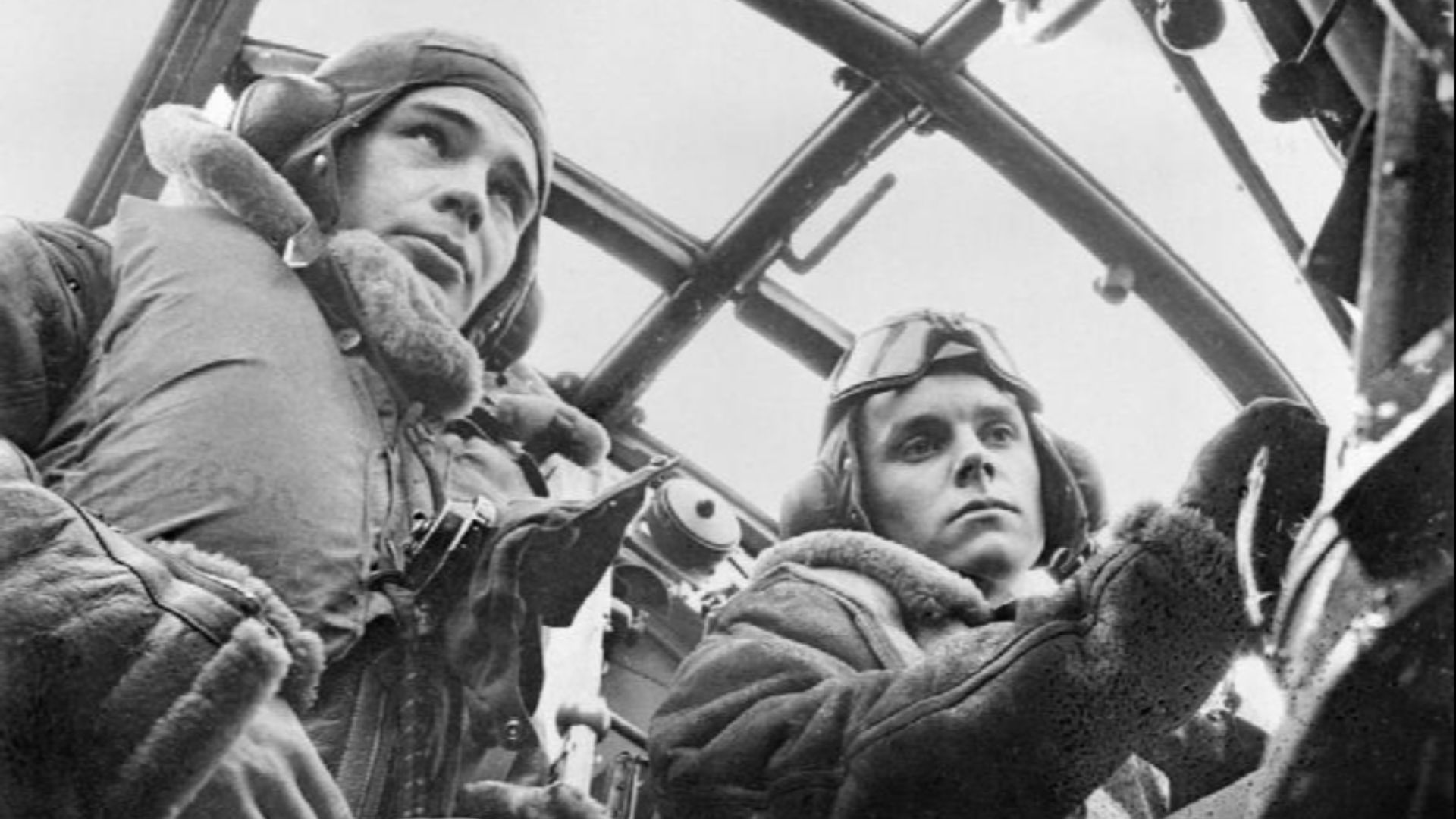The U.S. Airman Who Fell 20,000 Feet Without a Parachute—and Survived
Sometimes stories sound unbelievable until you dig in and realize they’re not embellished at all; they're simply one of those rare cases where reality outpaces imagination. Alan Magee’s fall during World War II sits in that category as the sort of event that makes you question physics, luck, and the terrifying randomness of survival. One minute he was inside a B-17 bomber being pummeled by enemy fire. The next, he was outside it, plummeting through the sky with no parachute, no plan. Just him and gravity, caught up in a free-falling spiral through roughly 20,000 feet of cold air and the glass train station roof waiting below to break his fall.
And yet he lived. People still argue whether the real miracle was the fall itself or the way his body found just enough give in that train station roof to break the impact without breaking every bone in his body. Either way, however the physics played out, the story feels like one of these rare events where the normal laws of reality are suspended momentarily to make the miracle happen.
The Aircraft That Wouldn’t Stay in the Air
Magee had joined the Army after the attack on Pearl Harbor. He was passed over for pilot duty due to his lightweight stature of 5’6” and 155 lbs, but he was a perfect fit as a ball turret gunner.
It was during his 7th mission that his B-17 was downed over Saint Nazaire. The target of their journey was a torpedo storage area near the submarine pens. Once over the target area, heavy flak and fighter attacks damaged the plane and started a fire on board. Only three crew members managed to bail out, one without a parachute. The crew had been hit multiple times, with enemy machine-gun rounds shredding panels and smoke billowing through the tight cabin. Smoke was billowing through the cabin, and the navigation gauges were jumping unpredictably.
The oxygen system had been damaged, too, which meant Magee was barely conscious when the plane at last spun out. Some accounts describe him crawling toward escape. Others say he was thrown out unconscious when the fuselage tore open. Regardless of which version is true, the outcome was the same: he and three other crew members escaped the failing aircraft. Of the three, he was the only one without a parachute.
The Freefall That Should’ve Been Fatal
Human bodies aren’t built for long falls. After a few seconds, terminal velocity kicks in, and the world becomes wind and blur. Magee fell fast—too fast to think, too fast to process what awaited him on the ground. Witnesses later said he looked like a piece of burnt debris tumbling from the sky.
Yet something about the angle, the spin, maybe even his exhaustion from hypoxia, kept him loose rather than rigid on his downward trajectory. People who survive major falls often share that same detail. When we aren’t bracing for impact, our body, weirdly, is able to withstand impacts that would normally result in certain death.
The Impact That Didn’t End Him
Directly below Magee stood the St. Nazaire train station, with its massive glass-and-steel roof arching over the platforms. He crashed through it, shattering the glass roof and falling burnt and unconscious to the station floor.
The glass roof absorbed his fall just enough to save his life. Magee survived, though barely. He was left with 28 shrapnel wounds, a shattered nose, eye damage, a punctured lung, kidney damage, a fractured right leg, and a right arm hanging by threads.
The Recovery That Made No Sense
 Vitali Adutskevich on Unsplash
Vitali Adutskevich on Unsplash
Magee woke up in a German hospital, where he was both patient and prisoner, wrapped in bandages, barely able to move. Despite his severe injuries, the doctors were stunned he had recognizable bones at all. Although they were enemies, the German doctor in charge of his case patched him up, making every effort to save his arm—which he did.
Magee was liberated in May 1945, and went on to receive the Air Medal for meritorious conduct and the Purple Heart. He later said the staff treated him with unexpected kindness—an odd, quiet detail tucked into a violent story. And after the war, he even managed to return to St. Nazaire to take a second look at the station that gave him a second chance at life.
He went on to earn his pilot’s license and worked in the aviation industry, passing away in 2003 at the age of 84.
KEEP ON READING

The U.S. Airman Who Fell 20,000 Feet Without a Parachute—and…
Beaton, Cecil on WikimediaSometimes stories sound unbelievable until you dig…
By Cameron Dick Nov 14, 2025
How Has The Biggest Signal Hijacking Remained Unsolved For 40…
Unknown, see en:Max Headroom broadcast signal intrusion incident. on WikimediaIt…
By Maria Cruz Nov 14, 2025
How A Storage Tank Of Molasses Led To Utter Catastrophe…
BPL on WikimediaImagine going about your day, minding your own…
By Emilie Richardson-Dupuis Nov 14, 2025
Some Of Our Planet's Most Haunting Archeological Finds
Simone Dinoia on UnsplashSometimes things that are buried should stay…
By Breanna Schnurr Nov 14, 2025
How The Hinterkaifeck Tragedy Remains Germany’s Biggest Unsolved Case
Andreas Biegleder on WikimediaMore than a century after it gripped…
By Rob Shapiro Nov 14, 2025
The History Of Your Favorite Dog Breeds
Hannah Lim on UnsplashFrom vicious wolves to our furry friends,…
By Breanna Schnurr Nov 13, 2025


